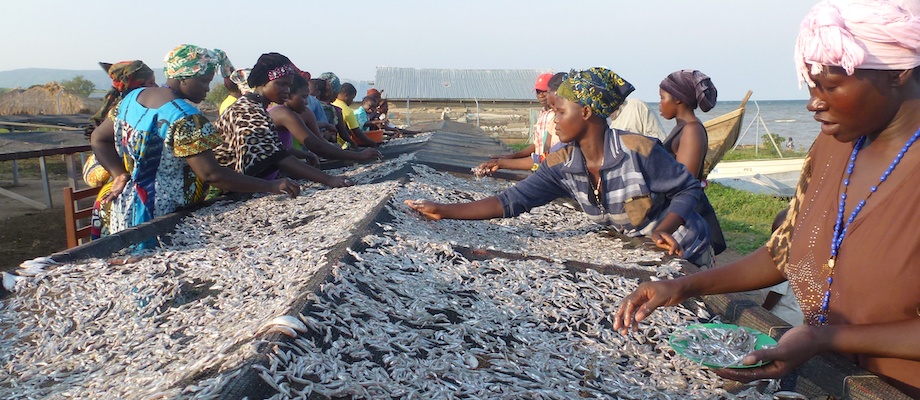Why gender matters when it comes to reducing food loss and waste in fish value chains
Contributed to FLW in Fish Value Chains by: Julia N. Heyl, International Expert Sociologist Food Waste, FAO
Women play a critical role throughout the fisheries and aquaculture value chain, accounting for almost half of the total workforce. They have a particularly strong presence in processing activities, as well as small-scale and subsistence activities. In developing countries women’s share of the total workforce in postharvest activities, such as processing, can amount up to 90 percent.
However, women struggle to be seen, engage in and benefit equally from the fisheries and aquaculture sector.
Even though their work is fundamental for income generation and nutrition security of the households and communities, it often remains invisible, and its importance not acknowledged, as it is considered as an extension of household chores.
At the same time, they face numerous limitations and constraints, due to their gender, and cannot realize their full potential. Their tasks are often tedious and time-consuming, hardly profitable and done manually with minimal technological support. They often lack access to finance to upscale their operations or invest in better tools and equipment. They might not be aware of techniques and practices that could increase their productivity. They work while simultaneously taking care for children. They are often less mobile due to social norms, limited resources or safety concerns. They are not equally represented in local decision-making bodies (like beach management units), and their needs (such as for instance safe and tidy fish landing sites) are not made a priority. Their level of organization tends to be low, and they cannot profit from the advantages of cooperatives or women’s groups.
But why does this matter and how does it relate to the reduction of food losses and waste in fish value chains?
The so-called gender-based constraints that women face limit their access to knowledge and information, participation and decision making, finance, inputs and resources and they suffer from high work burden and time poverty. These gender-specific limitations keep the value chain actors from unveiling their full potential which negatively impacts on the productivity and efficiency of the value chain and as a consequence results in an underperformance of the chain and eventually in increased losses.
Therefore it is key to: 1) Acknowledge the important role women play along the fish value chain and make their work visible through gender-sensitive loss assessments; 2) Identify limitations women are facing; and 3) Develop gender-responsive multi-dimensional solutions.
A gender-sensitive value chain assessment with regards to fish losses applying the Gender-responsive fish loss assessment methodology (GRFLAM), particularly at nodes of the chain where women are highly involved, provides a deeper insight into the issues and underlying dimension that the actors are facing that might eventually be gender-based. To address these, entry points for actions have to be identified and translated into suggestions that are adapted to the researched locality and address the identified needs and preferences and support the economic empowerment of women.
Multi-dimensional solutions to loss and waste often look at capacity building, strengthening of institutions and technological support. It goes without saying that these should take into consideration the special needs and preferences of women, and support women in their activities along the fish value chain. However, their impact might be even stronger when taking into account how gender inequalities can manifest also on a personal level, in the form of low confidence and limited aspirations. Solution approaches that also look at including mechanisms to unlock self-confidence and self-worth can lead to stronger agency, self-efficacy and uplifted aspirations and increase the uptake of good practices, like applying new skills and techniques, striving for higher efficiency and eventually reducing losses and waste.

